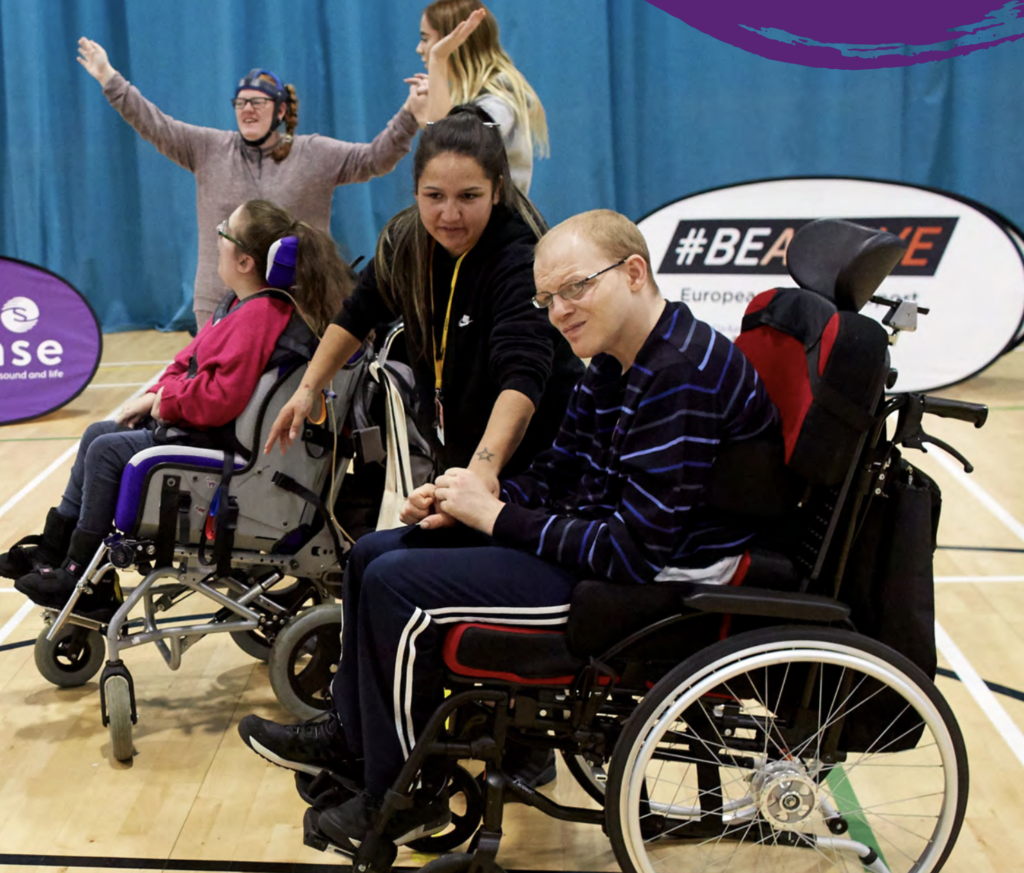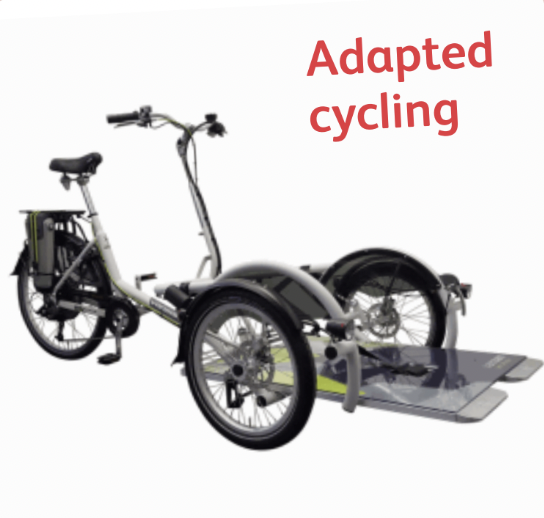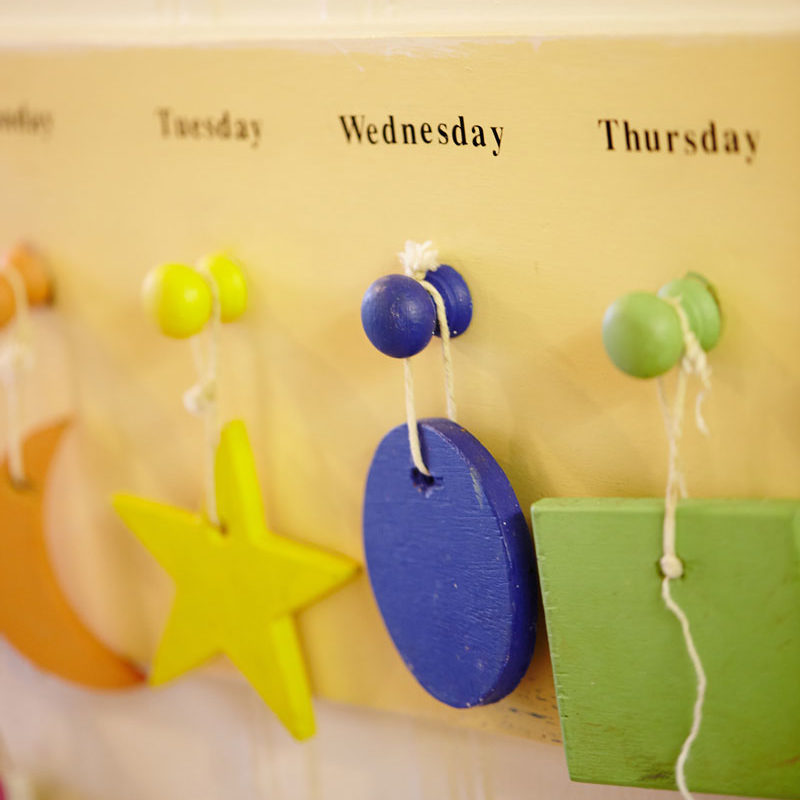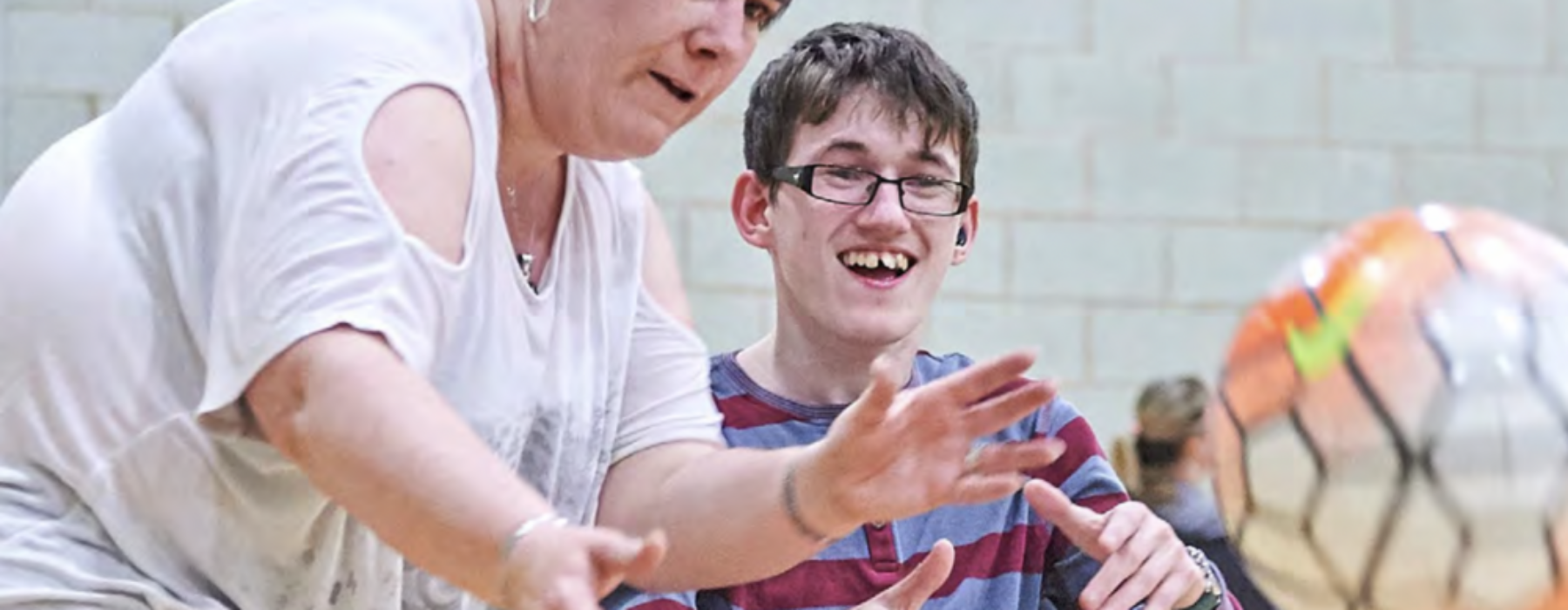How to engage people with complex disabilities in sport
On this page:
- Before you start
- Encouraging interaction
- Types of communication
- Creating positive environments
- How to be a good communication partner
- Use of language and terminology
- Additional resources
Some people with complex disabilities may not be able to use speech. They may have different communication methods, like vocalisations, signs, gestures and facial expressions. They may also have alternative communication systems. This guide is designed to introduce some of those systems and help you develop an understanding of how to communicate with participants with complex disabilities in a sports setting.
It is important to understand how to communicate with these participants because otherwise:
Good communication helps participants feel confident, to express themselves and make choices. These are then likely to support good physical and mental health and emotional wellbeing, enabling them to get the most out of your session.
- Their needs and preferences are unlikely to be met.
- They may feel frustrated, fearful and anxious.
- They may experience feelings of isolation, low self-esteem and reduced confidence.
- They may use inappropriate behaviours to communicate.
- They may not engage with or have the best experience at your session, and won’t experience all the benefits.
- They may not be able to explore their environment effectively, and will miss out on opportunities to learn and enjoy new experiences.
Before you start
Before delivering an activity to people with complex disabilities, it’s really important to develop a relationship of trust so that a participant can get the most enjoyment from your session.
Here are some suggestions for building trust
Let the person know you are there, verbally or through touch. Some people can hear with or without hearing aids. However, whether they have hearing or not, speak to the person so they can experience your body language.
Stand or sit close to the person so they can easily reach out to you.
Before rushing to give any instructions about your activity, introduce yourself by speaking and gently touching the person’s arm to let them know you’re there.
To ensure your communication is appropriate and person centred, work closely with the participant’s support staff to understand the person’s preferences. Where possible, get to know the person’s likes, dislikes and common behaviours.
If you have the skills and knowledge, use the person’s preferred communication method, observing their body language and how they respond to you. If they use a form of communication you are not familiar with, don’t worry – just follow the lead of the support worker and let them support you to communicate with the person.
Encouraging interaction
Communicating with people with complex disabilities may:
- Pull back their hands when touched
- Resist touching unfamiliar things
- Lack motivation to reach out and explore
- Over or under react to stimuli
- Have difficulties processing information through their senses
Communicating with people with complex disabilities may, therefore, require more thought, time and effort than simple verbal communication. You will need to build trust, increasing their confidence to use all their senses effectively to explore people, objects and environments.

Approaches that encourage interaction
Sit or stand close to the person when demonstrating activities, so they can feel your body language and know you are there.
Take turns, allowing them to take the lead, interpreting and expressing the activity in their own way. Imitate their movements – such as finger touches, rocking, vocalisations – letting the person take the lead initially, before introducing variations.
Allow the participant to “explore” the environment and equipment first, rather than starting your coaching as soon as they arrive. This will help them to get used to the environment, understand what they are about to do, and feel calmer and more relaxed.
When working with a participant with complex disabilities, progress may be very subtle and be harder to recognise. For example, instead of simply assessing a person’s cycling ability, celebrate that they have been able to wear a helmet for the whole session. This could have a big impact for the individual.
Where possible, give participants a choice. Allow them to choose a tennis racket, bike, ball or the mat that they want to use. Choice is a complex concept though, so start by offering two items and allow plenty of time. Having a choice allows the participant to be actively involved in a session and will encourage engagement.
Types of communication
Communicating with people with complex disabilities can be broken down into two categories: informal and formal.
Informal
Informal communication is more casual, spontaneous and happens in the moment. Such as:
- Body language (turning face away, etc.)
- Gesture (pointing, etc.)
- Vocalisations (including crying, screaming, etc.)
- Facial expressions (smiling, frowning, etc.)
Formal
Formal communication methods allow people to communicate about things that have happened in the past or will happen in future. You may wish to use some of these in your session to communicate more effectively with participants.
You can use body language or gestures like thumbs up, smiles, clapping and pointing to communicate quickly and easily.
Methods of communication
Symbols such as Widgit
One or more symbols can be combined together to form a more abstract concept.
For example:

How to use in your session
- The Sense Active team has created a range of easy-read Widgit flash-cards for you to use in your sessions. Download them by visiting the Resources section of our website.
- Work with the support workers present to show the Widgit cards to the participant, and then test and assess their understanding of the concept.
Picture cards
A picture or photograph with a direct link to the activity it represents. Keep this simple and use the actual activity or object to aid recognition.

How to use in your session
- This is a literal form of communication, rather than abstract. For example, if delivering a cycling session, use a picture of the specific bike you are using, rather than any random bike.
- Reduce any additional visual clutter in the picture, so the focus is on the desired object or activity. This will help a participant understand the activity they are about to do.
Objects of reference (OOR)

An object of reference is something which can be held or touched, and is used to represent a certain activity.
The OOR must be something which has meaning for the individual, and which they associate specifically with that activity. When used repeatedly over time, this helps to prepare the participant physically and mentally for the activity they are about to do, helping to reduce anxiety and improve engagement.
How to use in your session
- It is important that the object you use is relevant and meaningful to the individual, so work with the participant and support staff to identify something that has meaning for them.
- Allow them to take this object home between sessions so that they can use it to prepare in advance for your next session.
OOR Example
- Present swimming costume prior to going to a swimming lesson.
- The individual will then start to form an understanding that the costume means they will be going for a swim.
- Over time, the individual may even independently begin to present this object to indicate they want to do the activity.
Types of signing system
Participants with complex disabilities may use also a variety of signing systems. As a coach or instructor, you would not be expected to know how to use all of these fully – a support worker can help you with this. It may be helpful, however, to recognise these systems and learn a few key signs or gestures of each. This will help you to form a connection with a participant through their chosen communication method.
Total communication
A total communication approach is about finding and using the right combination of communication methods for each person. For example, this may be: speech + objects + sign. Each method reinforces the other and strengthens meaning for the individual.
If you would like to learn more about the above forms of communication, please see the additional resources section.
- Visual signing/British Sign Language (BSL) – person uses sight to receive signed communication.
- Sign supported English and Makaton signs – visual signs are used alongside speech, with only key words in the sentence signed.
- Hand-under-hand signing – using adapted signs, signs are sent and received through touch.
- On-body signing – touch is used to sign on a specific part of a person’s body to pass on information.
- Deafblind Manual alphabet and block alphabet – a method of spelling out words onto a person’s hand. Straightforward to learn but can be more complex to receive. A person would need good literacy silks to use this communication method.
Use of language and terminology
Some people can worry that, when communicating with disabled people, they may be using inappropriate, incorrect or offensive language or terminology. It is always best to ask the person you are working with for their preferred terminology.
However, you can find some great tips on how to ensure the language you use is appropriate on GOV.uk.
How to be a good communication partner
-
Be person-centred, using the person’s preferred communication method(s).
-
Be a good listener, by confirming with touch, gesture or speech.
-
Be consistent by following the guidelines in this document and information provided by the individual themselves or their support worker.
-
Be positive! Your enthusiasm will be felt by others.
-
Be patient. Progress may be slow and in small steps, but don’t give up.
-
Be a team player. Share any ideas and things that have worked well with others.
-
Be creative, using any resources you have to help get your message across.
Creating positive environments
Positive environments help to maximise opportunities for communication and interaction. Things to consider:
Lighting
- Consider the lighting that is used in your sports facility or activity setting.
- Where possible, use daylight and consider adding lamps or reducing glare.
- Lights can be an added stimulus that may engage a participant or distress them, depending on their preference.
- Make sure to discuss these preferences with the participant and their support staff before altering the lighting.
Positioning
- Think about where are you standing. Can the participants see you clearly? Can everyone in the group see your demonstrations or hear you clearly? Can they interact with you in a tactile way, if needed?
- Consider reducing clutter or unnecessary visual distractions.
- Consider the amount of verbal instructions you provide. Lots of loud instructions might be helpful for some but overwhelm others. Again, knowing your participants can help guide you.
Noise
Think about reducing the amount of background noise, where possible.
- In a sports hall, there may be lots of other activities taking place, and a significant echo from the high ceilings.
- Consider using an isolated space, e.g. a dance studio.
- Consider the time of day you deliver, e.g. not at peak times.
Colour contrast
- Would it help the participants to use different colours in the environment, and for equipment and clothing?
- Consider the colour of the equipment, walls, flooring, cones and clothing. Speak to participants to understand what colours help them to distinguish shapes and items.
Additional resources
We have a range of additional resources to support you to communicate and engage with people with complex disabilities in a sports setting.
To find out more, please visit the resources section of our website.
Or email [email protected]

